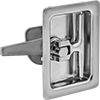Filter by
NEMA Style
Latching Distance
Opens With
Cam Latch Type
Voltage
Through-Hole Diameter
Electrical Connection Component
Finish
Electrical Connection
Latch Turn Direction
Environment
DFARS Specialty Metals
Most Likely Products
All Results
Building and Machinery Hardware
Electrical
Fastening and Joining
Lighting























































